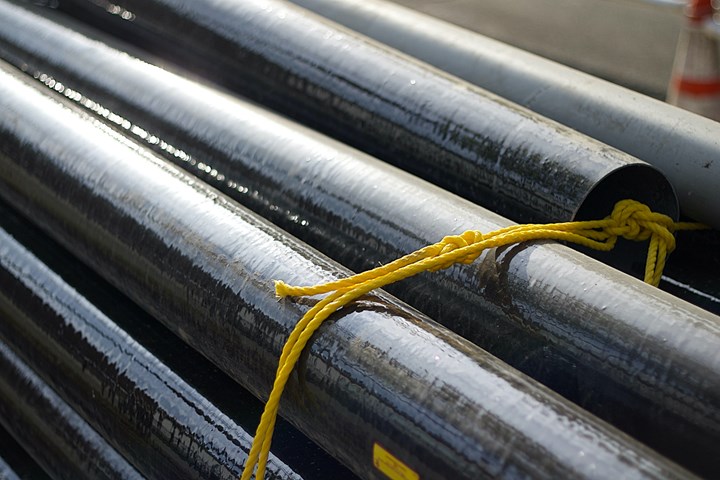OCSiAl graphene nanotubes enhance dielectric properties of GFRP pipes
Nanotubes grant permanent, uniform anti-static properties and are compatible with most resin types and manufacturing processes, enabling composite pipe use in high-risk facilities.
OCSiAl (Luxembourg and Columbus, Ohio, U.S.) graphene nanotubes have recently facilitated the use of glass fiber-reinforced polymer (GFRP) pipes at high-risk oil and gas, chemical and production facilities.
According to the company, graphene nanotubes dispersed in resin grant permanent and uniform anti-static properties to pipes and ensure safety from sparks, a frequent cause of ignition and explosion. The attraction of this solution lies in the simplicity of granting anti-static properties to composite materials and its uniformity. Previously, the usual method was to coat the fiberglass surface with an anti-static coating, to apply a carbon fiber veil as a separate layer or to add carbon black inside the resin.
“The coating, unfortunately, is subject to abrasion loading and other durability issues and there is a potential need for further recoating,” Hendrik Janssen, technical support engineer for EMEA, OCSiAl Group, says. “Carbon [fiber] veils or rovings can require more labor and production time, and can also be challenging to produce rotating parts with the required quality. Also, carbon black leads to degradation of mechanical properties and unwanted dust formation.”
The practical solution, welcomed by pipe manufacturers, is to replace 4–15% of carbon black with 0.02–0.05% of graphene nanotubes to achieve a permanent and stable level of resistivity of 104 – 106 Ohm*cm in GFRP pipes. Nanotubes reportedly create a homogeneous and stable conductive network inside epoxy, polyester and vinyl ester that ensures that every part of a pipe can dissipate dangerous static charge and do this throughout the whole service life of the pipe. Nanotube concentrates by OCSiAl based on various polymer carriers are easily compatible with key manufacturing technologies, such as sheet molding compound (SMC), bulk molding compound (BMC), spray-up, filament winding, pultrusion and hand layup.
“The value proposition nanotubes bring is two-fold,” Janssen adds. “On the one hand, nanotubes facilitate a wider use of composite pipes, which eliminate the corrosion problem, slash the cost of infrastructure and offer CO2 savings compared to the installation and maintenance of steel pipes. On the other hand, nanotubes significantly improve the safety of the high-risk facilities, which is crucial for the oil and gas industry, chemical plants and mines.”
Related Content
-
Microwave heating for more sustainable carbon fiber
Skeptics say it won’t work — Osaka-based Microwave Chemical Co. says it already has — and continues to advance its simulation-based technology to slash energy use and emissions in manufacturing.
-
ZeroAvia advances to certify ZA600 in 2025, launch ZA2000 with liquid hydrogen in 2027
Lightweight composite tanks are key to ZeroAvia’s vision for H2 aircraft to rival range and utility of jet fuel aviation.
-
Cryo-compressed hydrogen, the best solution for storage and refueling stations?
Cryomotive’s CRYOGAS solution claims the highest storage density, lowest refueling cost and widest operating range without H2 losses while using one-fifth the carbon fiber required in compressed gas tanks.

















